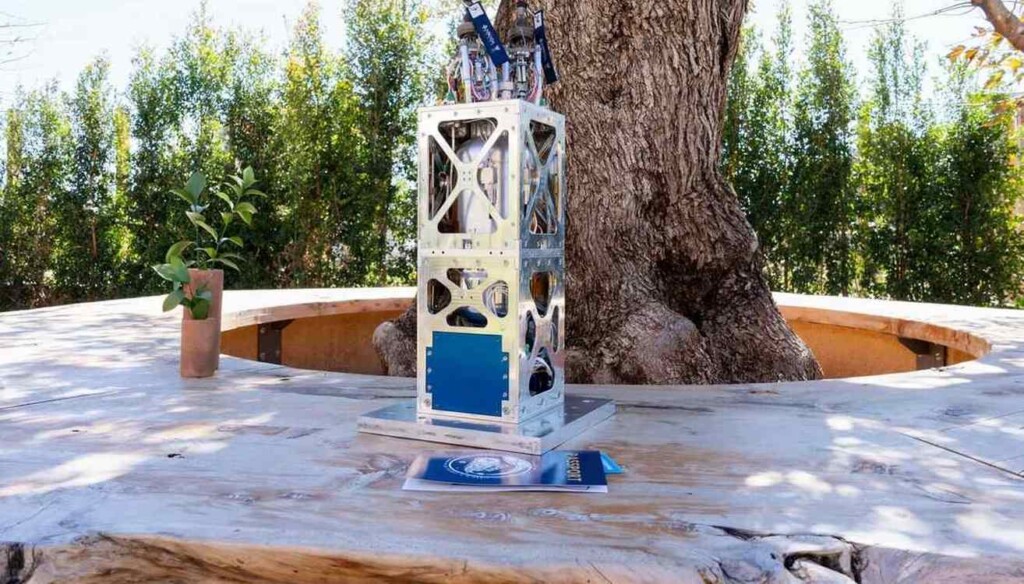 A D-ORBIT spacecraft that tested a hydrogen peroxide-powered thruster – credit, Arkadia Space
A D-ORBIT spacecraft that tested a hydrogen peroxide-powered thruster – credit, Arkadia SpaceA Spanish startup has successfully tested a new thruster for spacecraft that runs on a ‘green’ propellant to replace the ultra-toxic hydrazine commonly used in the industry.
It inside uses hydrogen peroxide, and is then not only less toxic but also substantially less expensive to run. Arkadia Space, which invented the thruster system, celebrated an in-orbit demonstration in early June.
Codenamed the DARK propulsion system, it powered an ION spacecraft from the aerospace company D-ORBIT during a controlled test in which the propellant was able to generate 5 newtons of thrust during thousands of small, fraction-of-a-second firings, as well as longer steady burns of five seconds or longer.
“What we have found is that it is exactly the same as the ground data,” Francho Garcia, chief executive and co-founder of Arkadia Space, said in a recent interview of the thruster’s in-space performance. “It was much better than what we were expecting, honestly.”
The company was able to demonstrate the incredible cost savings when it launched aboard SpaceX’s Transporter-13 mission from Vandenberg Space Force Base. A 2008 study by Purdue School of Aeronautics and Astronautics found that hydrogen peroxide fuel comes in at around $10.36 per kilogram, while hydrazine topped the cost chart at around $75.8/kg.
It also would have rolled out the propellant with little more than hand and eye protection, compared to complete hazmat equipment as would be the case with hydrazine.
Former US Air Force corporal and ground crew engineer Anthony Urankar told GNN’s Andrew Corbley that hydrazine is one of the most significant contaminants any Air Force technician could come in contact with.
SUSTAINABILE AVIATION FUEL: Jet Fuel Derived From Used Cooking Oil Certified Airworthy for Large-Scale Production in China
Urankar recounted one instance of a crashed F-16 fighter jet—which uses the material as a fuel for emergency burns in the event of an engine stall—leaking hydrazine onto the crash site. Hazmat crews used excavators to scoop up all the dirt across an area far in excess of that affected by the crash. All those who participated were then referred for cancer screenings, as hydrazine is considered a probable carcinogen.
As a result of its expense, and the added expense such toxicity demands for handling and safety requirements, Garcia noted that companies have told him they need to run “green” propellant-powered satellites, or SpaceX won’t include their craft onboard rideshare launches.
MORE SPACE INNOVATION: Tiny Spacecraft is ‘Solar Sailing’ in Orbit Using Only Sunlight, a Revolution in Space Exploration
Garcia also said that the company, which currently designs thrust systems for satellites and spacecraft, have been contacted about the possibility of scaling the technology up for use in launch and re-entry vehicles.
“We believe that with the data that we have, we should have no problems signing the first customers,” Garcia said, according to Space News.
SHARE This Advancement In Non-Toxic Space-Tech With Your Friends…
Source link

